
Qualcomm Reports FY 2015 Q2 Results: Strong Q2 But Lower Forecast For 2015
Qualcomm released their Q2 financial results today, and they had another strong quarter. Revenues increased 8% from Q2 2014, coming in at $6.9 billion. On a GAAP basis, operating Income took a nose dive to $1.3 billion, down from $2.0 billion last year and $2.1 billion last quarter. This of course means that net income is also much lower, with $1.1 billion being reported for Q2 2015, which is down 46% from last year and 47% from last quarter. GAAP earnings per share came in at $0.63, down from $1.14 last year and $1.17 last quarter.
| Qualcomm Q2 2015 Financial Results (GAAP) | |||||
| Q2'2015 | Q1'2015 | Q2'2014 | |||
| Revenue | $6.894B | $7.099B | $6.367B | ||
| Gross Margin | 19.4% | 29.1% | 31.3% | ||
| Operating Income | $1.336B | $2.064B | $1.990B | ||
| Net Income | $1.053B | $1.972B | $1.959B | ||
| Earnings Per Share | $0.63 | $1.17 | $1.31 | ||
The reason for the large hit to operating income, net income, and EPS is due to Qualcomm having to pay out $975 million to the China National Development and Reform Commission or NDRC. This charge is the resolution that was enacted due to Qualcomm falling afoul of China’s Anti-Monopoly Law, and as such it is a one-time fee. As such, Qualcomm has also released Non-GAAP results which exclude this one time hit to get a better look at how the business is operating. On a Non-GAAP basis, operating income was up 16% year-over-year to $2.7 billion, which is also a 7% gain over last quarter. Net income was up 4% at $2.3 billion, and EPS came in at $1.40 for Q2, as compared to $1.31 last year and $1.34 last quarter.
| Qualcomm Q2 2015 Financial Results (Non-GAAP) | |||||
| Q2'2015 | Q1'2015 | Q2'2014 | |||
| Revenue | $6.894B | $7.099B | $6.367B | ||
| Gross Margin | 39.3% | 35.7% | 36.7% | ||
| Operating Income | $2.707B | $2.531B | $2.337B | ||
| Net Income | $2.339B | $2.263B | $2.255B | ||
| Earnings Per Share | $1.40 | $1.34 | $1.31 | ||
Qualcomm actually had negative cash flow for the quarter. The already mentioned fine paid to China accounted for some of it, and Qualcomm also performed a prepayment of $950 million to secure long-term capacity from one of their suppliers. Those two hits resulted in a $0.7 billion shortfall in cash flow. Last year, they had $1.8 billion in positive cash flow, and last quarter it was $2.4 billion.
For the second quarter, Qualcomm shipped 233 million MSM chips, which is up 24% year-over-year, but down from the 270 million shipped in Q1. Total device sales from Qualcomm licencees was $75.8 billion for the quarter, up 14% year-over-year and up 34% quarter-over-quarter. The company is estimating that 384-388 million 3G/4G devices shipped in Q2, which is up 30% over Q2 2014 and up 35% over Q1 2015. Average Selling Price of 3G/4G devices was $193-$199, which is down 13% year-over-year and 1% from last quarter, as the market moves towards lower cost devices.
| Qualcomm Devices | |||||
| Q2'2015 | Q1'2015 | Q2'2014 | |||
| MSM Chip Shipments | 233M | 270M | 188M | ||
| Total Reported Device Sales | $75.8B | $56.4B | $66.5B | ||
| Est. reported 3G/4G device shipments | 384-388M | 284-288M | 295-299M | ||
| 3G/4G Device Average Selling Price | $193-$199 | $194-$200 | $221-$227 | ||
Qualcomm repurchased 27.8 million shares in Q2, plus paid out $0.42 per share, returning $2.6 billion to shareholders of the company. On March 9th, they announced a new $15 billion stock repurchasing program which includes $10 billion in shares to be bought back in the next twelve months. Additionally, they will be paying out $0.48 per share on June 24th to any shareholder of record as of June 3rd, which is 14% more than last quarter’s payout.
However not everything to come out of the results was good news. Qualcomm has lowered their outlook for the semiconductor business for the second half of FY 2015. Greater competition has reduced Qualcomm’s market share in the SoC space, especially within flagship phones. The two largest phone makers, Samsung and Apple, both use their own designs in their flagship products. This will change Qualcomm’s product mix more heavily towards modem chipsets. There has also been some uncertainly created due to the existing licensing agreements Qualcomm has in place in China due to the resolution with the NDRC. With the case now concluded, the company is hopeful that these arrangements can be sorted out, as they believe that not all devices sold in calendar year 2014 were reported to them.
For Q3, the estimate is that revenues will decline by 9-21% over Q3 2014, which will drop EPS 31% to 41% on a Non-GAAP basis, or 37% to 49% based on GAAP reporting. For FY 2015, Qualcomm is estimating revenue to be between negative 6% and positive 2%.
Source: Qualcomm
Read More ...
Google Unveils Project Fi: A Network for the Nexus 6
Today Google officially announced their previously rumored entry into the world of wireless service. This new endeavor is known as Project Fi, and it's exclusive to owners of the Nexus 6 who live in the United States. While carriers have offered branded mobile devices at times, the entry of a company making mobile phones into the business of providing the wireless service for their own devices is unprecedented. But unlike Google Fiber, Project Fi is not Google's attempt to build a new wireless network in the United States. Rather, they will be acting as a Mobile Virtual Network Operator (MVNO) running on the T-Mobile and Sprint networks, as well as piggybacking off of open WiFi hotspots.
On a typical carrier you will pay for some bucket of data alongside your calling minutes and texts, and if you don't use all that data during the month then it disappears. Some carriers like T-Mobile USA have played with this by allowing data to roll over to another month, much like how many prepaid carriers allow minutes to roll over to the next month if they are unused. But in general, you often end up paying for more data then you actually need to avoid overage charges. With Project Fi, Google starts plans at $20 per month for unlimited domestic calling and unlimited domestic + international texting. On top of that you can select how much data you believe you will need, with the cost being $10/GB.
The unique aspect of Project Fi when compared to other network operators is how Google is changing the situation with unused data. Rather than rolling it over or having it disappear, Google simply credits you for the difference. For example, a user who pays $30 for 3GB per month may only use 1.4GB that month. In that situation, Google will credit them $16 for the data they did not use. Effectively, this means that Google only charges users for the data they use, but not at the typically ridiculous rates for pay as you need data on other carriers. What I don't understand is why Google even has data tiers in the first place. Given the rounding, they might as well just charge $1 for every 100MB used, as any overages are charged as the same rate as the data in the plan itself.
Google is also taking much of the pain out of roaming in other nations. The data you purchase for your Project Fi plan is usable in 120 different countries, although it's limited to a speed of 256Kbps. Google's network also extends beyond cellular carriers, with Google's network configured to automatically utilize public hotspots as part of the network itself. WiFi calling is supported, and so the transition between cellular and WiFi should be seamless in theory. Google is also promising that information will be encrypted so that users can have their privacy preserved when using public WiFi.
The last really interesting part of Project Fi is how it will be able to integrate with Hangouts. Since your phone number "lives in the cloud", Google can push texts and phone calls to any devices that have the Google Hangouts application installed. This extends from your Nexus 6, to your Chromebook, to your iPad, to your Windows PC.
Project Fi is currently beginning as an early access program. Users who are interested and who own the Nexus 6 can check out Google's sign up page to apply to be one of the first users of this new network. Google's blog post in the source below has a bit more information as well as a video about this new project
Read More ...
Intel PPSTCK1A32WFC Bay Trail-T Compute Stick Review
The success of UCFF PCs have made vendors realize that small and power-efficient computing platforms are here to stay. ARM SoC manufacturers, finding that the tablet market had reached saturation, kick-started a new product category in the form of 'HDMI sticks'. As a computing platform, they were smaller than the ultra-compact form factor PCs - just looking like an oversized USB key. Intel announced the Compute Stick at CES to bring one of the first Wintel platforms into this space. Late last month, Google also introduced a Chrome OS-based HDMI stick. Both of these point to the 'stick' computing platform being more than just a passing fad. The Intel Compute Stick we are reviewing today comes with Windows 8.1 with Bing (32-bit) pre-installed, making it ready to roll right out of the box. Read on for a performance review and our thoughts on the product.
Read More ...
The Moto E (2015) Review
During the past couple of years we've seen a dramatic shift in Motorola's strategy for competing in the smartphone market. As one of the earliest producers of Android devices, the company needed to let go of ideas and strategies from years that had since past. Producing exclusive devices for carriers like Verizon was no longer going to work with the iPhone finally freed from exclusivity on AT&T, and Motorola's hardware and software design had begun to show a great deal of age.
That brings us to today, at a point where Motorola has more or less found their new approach to making smartphones. It's a very simple and understandable approach. Consistency across the design of the hardware, consistency across the design of the software, and a yearly line of phones that can easily be divided into budget, mid-range, and flagship categories based on a single letter in their name. This review takes a look at the newest version of Motorola's budget device, the 2015 Moto E. Read on for our full review of Motorola's newest smartphone.
Read More ...
Samsung Introduces New 8" and 9.7" Galaxy Tab A Tablets
Today Samsung Electronics America announced two new tablets that are coming to market in the United States. Samsung's new Galaxy Tab A tablets come in 8.0" and 9.7" sizes, and Samsung is marketing them as tablets that are well suited for keeping in touch with friends and family. The specs of both tablets are laid out in the chart below.
| Samsung Galaxy Tab A 8.0" | Samsung Galaxy Tab A 9.7" | |
| SoC | Snapdragon 410 (APQ8016) 4x 1.2GHz Cortex A53, 400MHz Adreno 306 GPU |
|
| RAM/NAND | 16/32GB NAND + MicroSDXC, 1.5GB RAM | |
| Display | 8.0" 1024x768 PLS LCD | 9.7" 1024x768 PLS LCD |
| Dimensions | 208.4 x 137.9 x 7.5mm, 313g | 242.5 x 166.8 x 7.5mm, 449g |
| Camera | 5MP Rear Facing, 2MP Front Facing | |
| Battery | 4200 mAh (15.96 Whr) | 6000 mAh (22.8 Whr) |
| OS | Android 5.0 Lollipop | |
| Connectivity | 802.11 a/b/g/n + BT 4.0, microUSB2.0 | |
Both tablets have very similar specifications. They are both distinctly mid-range tablets, with Qualcomm's Snapdragon 410 at their heart, 1.5GB of RAM, and a 1024x768 PLS display. They're really only differentiated by the size of their displays, and subsequently their dimensions and battery capacity. I think it may be difficult for Samsung to charge a price premium for the 9.7" model when it doesn't have any improvements to display resolution or internal hardware over the 8.0" model.
What makes these new tablets stand out from Samsung's previous tablet offerings are their sizes and their design. Both tablets have a 4:3 aspect ratio, which is a significant departure from the 16:10 tablets that Samsung has produced in the past. Both tablets also have a full metal chassis, which will be an enormous improvement over the plastic construction of Samsung's other tablets. I am very interested to see what Samsung can do with this type of design on a high end tablet with flagship specifications.
Both Galaxy Tab A models are available for preorder now, and they'll begin to ship on May 1st in the United States. Both models are available in white, titanium, and blue finishes. The 8.0" model costs at $229, while the 9.7" model costs $299. There will also be a version of the 9.7" model with Samsung's S-pen included for $349. Through Samsung's new app partnership with Microsoft, the new tablets will come with Microsoft's Office for Android applications preinstalled, and buyers will receive 100GB of OneDrive storage for two years.
Read More ...
Intel NUC5i7RYH Broadwell-U Iris NUC Review
Over the last couple of years, mini-PCs in the ultra-compact form factor (UCFF) have emerged as one of the bright spots in the troubled PC market. Intel's NUC systems are one of the most popular in this category. The lack of graphic prowess in the NUCs allowed for machines such as BRIX Pro (based on the Haswell Iris Pro CPU) to enter the market. With Broadwell, Intel is bringing out an Iris NUC on its own. Read on for our review of the NUC5i7RYH.
Read More ...
Sony Announces the Xperia Z4
Today Sony Mobile officially announced the Xperia Z4 on their Japanese website. The Xperia Z4 will be the company's flagship smartphone for 2015, sitting alongside Sony's flagship tablet which is called the Xperia Z4 Tablet. Based on the specifications provided by Sony, it certainly looks like they've done everything possible to make it fit that role with regards to its hardware. Thankfully, Sony's launch page gives pretty much every specification one could be interested in, and I've organized them in the chart below.
| Sony Xperia Z4 | ||||||
| SoC | MSM8994 2/1.5 GHz A57/A53 Snapdragon 810 | |||||
| Memory and Storage | 32GB NAND + MicroSDXC, 3GB RAM | |||||
| Display | 5.2" 1920x1080 IPS LCD | |||||
| Cellular Connectivity | 2G / 3G / 4G LTE (Qualcomm UE Category 7/9 LTE) | |||||
| Dimensions | 146 x 72 x 6.9 mm, 144g | |||||
| Camera | 20.7 MP Sony Exmor, 1/2.3" Rear Facing, 25mm focal length 5.1MP Front Facing |
|||||
| Battery | 2930 mAh | |||||
| Other Connectivity | 2x2 802.11 a/b/g/n/ac + BT 4.1, microUSB2.0, NFC, GPS/GNSS | |||||
| SIM Size | NanoSIM | |||||
| Operating System | Android 5.0 Lollipop | |||||
The specifications for the Z4 are certainly appealing. Potential speed and thermal issues relating to Snapdragon 810 aside, the Z4 packs what is basically the best internal hardware available for smartphone manufacturers at the moment. Snapdragon 820 won't be available until the second half of this year at the absolute earliest, and so MSM8994 paired with 3GB of RAM is the fastest you'll see in an Android smartphone that isn't the Galaxy S6.
What may be notable for some is the decision to stay with a 1920x1080 LCD. Given the issues with power consumption and brightness with current 2560x1440 LCD panels, and the relatively limited improvement to sharpness at this display size, I think that staying with a 1080p display was the right decision to make with the Z4.
The Xperia Z4 comes in White, Black, Copper, and Aqua Green
Design wise, the Xperia Z4 bears a great deal of similarity to its predecessor, the Xperia Z3. While it's not a full metal unibody design, it does have a metal frame surrounding the outside of the device. At 6.9mm it is as thin as the iPhone 6 which is impressive. Sony has also been able to include one of their 20.7MP sensors without introducing a camera hump, although the compromise is its 25mm focal length. Like most of Sony's recent products, the Xperia Z4 has an IP65 / IP68 rating for dust and water protection, which is something that now differentiates it from the flagship devices offered by other manufacturers.
At the moment, Sony hasn't provided any information about when an international release of the Xperia Z4 can be expected. It follows that the price is also unknown, although one can guess that it will be around the same price as this year's other flagship devices.
Read More ...
Windows 10 Insiders: New Windows 10 Mobile Build Now Available For Phones
It was almost two months ago that Microsoft released the first build of Windows 10 for phones. The first build was very basic, and was missing a lot of the Windows 10 functionality that will be coming. If you did want to try it out though, it was limited to just a handful of devices which means that it had a very small audience. Today that is changing, and the new build is available on almost every single Nokia/Microsoft phone made with the big exception of the high end Lumia 930/Icon, as well as the just released Lumia 640XL. Both devices require some new scaling code added to support the display size and resolution.
But with this build, we really get our first glance at Windows 10 on phones. Many of the core apps have been updated to have a new experience. Project Spartan, which we first saw in the latest Windows 10 desktop build, is now replacing Internet Explorer on the phone as well. Considering the performance delta between mobile CPUs and desktop CPUs, the performance improvements that we have measured in Project Spartan should make an even bigger difference. I will run one of my devices through some benchmarks to see what the new build will offer.
Also new is the Outlook Mail and Outlook Calendar apps, which are universal Windows apps and will be the same ones found on the desktop too, although they are not yet on the current desktop build, so we will get our first look at them on the small screen. They have a new UI, and the calendar and mail can both be accessed while in the same app rather than having to switch between two. Outlook will now leverage Word for email composition as well, which should drastically improve the experience on mobile.
The Phone and Messaging apps are also new. Both have new designs, but the Skype integration coming to the Messaging app does not appear to be part of this build. The People and Maps app are also redesigned.
All of these apps can now be accessed through a new App Switcher, which is accessed the same way as the old one – hold the back button – and it now supports landscape and offers a grid layout on larger devices which have extra screen real estate.
For anyone who wants to try it out, you must be part of the Windows Insider program, and install the Windows Insider app on your phone, and then sign in with the same MS account as you signed up for the Windows Insider with. Remember though that this is all pre-release software, so you may not want to install this on your personal phone. There are a list of known bugs as well, so be sure to check out the source link if you are interested in installing the new Technical Preview.
Source: Microsoft
Read More ...
Crucial BX100 (120GB, 250GB, 500GB & 1TB) SSD Review
Crucial has been doing very well in the client SSD market during the past year. Crucial's/Micron's ability to quickly roll out the 16nm NAND node definitely paid off because the MX100 really nailed it when it came to cost and overall value. The MX100 set a new bar for mainstream SSD prices while still providing solid performance in typical client-level workloads. Back at CES, Crucial introduced some fresh faces to its client SSD lineup by announcing the MX200 and BX100. The MX200 is essentially a retail version of Micron's M600 that was launched last year and which we already reviewed, but the BX100 is a totally new series that utilizes Silicon Motion's popular SM2246EN controller with custom Crucial firmware. Can the BX100 provide what the MX100 did last year? Read on and find out!
Read More ...
Future-proofing HTPCs for the 4K Era: HDMI, HDCP and HEVC
4K (Ultra High Definition / UHD) has matured far more rapidly compared to the transition from standard definition to HD (720p) / FHD (1080p). This can be attributed to the rise in popularity of displays with high pixel density as well as support for recording 4K media in smartphones and action cameras on the consumer side. However, movies and broadcast media continue to be the drivers for 4K televisions. Cinemal 4K is 4096x2304, while true 4K is 4096x2160. Ultra HD / UHD / QFHD all refer to a resolution of 3840x2160. Despite the differences, '4K' has become entrenched in the minds of the consumers as a reference to UHD. Hence, we will be using them interchangeably in the rest of this piece.
Currently, most TV manufacturers promote UHD TVs by offering an inbuilt 4K-capable Netflix app to supply 'premium' UHD content. The industry believes it is necessary to protect such content from unauthorized access in the playback process. In addition, pushing 4K content via the web makes it important to use a modern video codec to push down the bandwidth requirements. Given these aspects, what do consumers need to keep in mind while upgrading their HTPC equipment for the 4K era?
Display Link and Content Protection
DisplayPort outputs on PCs and GPUs have been 4K-capable for more than a couple of generations now, but televisions have only used HDMI. In the case of the SD to HD / FHD transition, HDMI 1.3 (arguably, the first HDMI version to gain widespread acceptance) was able to carry 1080p60 signals with 24-bit sRGB or YCbCr. However, from the display link perspective, the transition to 4K has been quite confusing.
4K output over HDMI began to appear on PCs with the AMD Radeon 7000 / NVIDIA 600 GPUs and the Intel Haswell platforms. These were compatible with HDMI 1.4 - capable of carrying 4Kp24 signals at 24 bpp (bits per pixel) without any chroma sub-sampling. Explaining chroma sub-sampling is beyond the scope of this article, but readers can think of it as a way of cutting down video information that the human eye is less sensitive to.
HDMI 2.0a
HDMI 2.0, which was released in late 2013, brought in support for 4Kp60 video. However, the standard allowed for transmitting the video with chroma downsampled (i.e, 4:2:0 instead of the 4:4:4 24 bpp RGB / YCbCr mandated in the earlier HDMI versions). The result was that even non-HDMI 2.0 cards were able to drive 4Kp60 video. Given that 4:2:0 might not necessarily be supported by HDMI 1.4 display sinks, it is not guaranteed that all 4K TVs are compatible with that format.
True 4Kp60 support comes with HDMI 2.0, but the number of products with HDMI 2.0 sources can be counted with a single hand right now. A few NVIDIA GPUs based on the second-generation Maxwell family (GM206 and GM204) come with HDMI 2.0 ports.
On the sink side, we have seen models from many vendors claiming HDMI 2.0 support. Some come with just one or two HDMI 2.0 ports, with the rest being HDMI 1.4. In other cases where all ports are HDMI 2.0, each of them support only a subset of the optional features. For example, not all ports might support ARC (audio return channel) or the content protection schemes necessary for playing 'premium' 4K content from an external source.
HDMI 1.3 and later versions brought in support for 10-, 12- and even 16b pixel components (i.e, deep color, with 30-bit, 36-bit and 48-bit xvYCC, sRGB, or YCbCr, compared to 24-bit sRGB or YCbCr in previous HDMI versions). Higher bit-depths are useful for professional photo and video editing applications, but they never really mattered in the 1080p era for the average consumer. Things are going to be different with 4K, as we will see further down in this piece. Again, even though HDMI 2.0 does support 10b pixel components for 4Kp60 signals, it is not mandatory. Not all 4Kp60-capable HDMI ports on a television might be compatible with sources that output such 4Kp60 content.
HDMI 2.0a was ratified yesterday, and brings in support for high dynamic range (HDR). UHD Blu-ray is expected to have support for 4Kp60 videos, 10-bit encodes, HDR and BT.2020 color gamut. Hence, it has become necessary to ensure that the HDMI link is able to support all these aspects - a prime reason for adding HDR capabilities to the HDMI 2.0 specifications. Fortunately, these static EDID extensions for HDR support can be added via firmware updates - no new hardware might be necessary for consumers with HDMI 2.0 equipment already in place.
HDCP 2.2
High-bandwidth Digital Content Protection (HDCP) has been used (most commonly, over HDMI links) to protect the path between the player and display from unauthorized access. Unfortunately, the version of HDCP used to protect HD content was compromised quite some time back. Content owners decided that 4K content would require an updated protection mechanism, and this prompted the creation of HDCP 2.2. This requires updated hardware support, and things are made quite messy for consumers since HDMI 2.0 sources and sinks (commonly associated with 4K) are not required to support HDCP 2.2. Early 4K adopters (even those with HDMI 2.0 capabilities) will probably need to upgrade their hardware again, as HDCP 2.2 can't be enabled via firmware updates.
UHD Netflix-capable smart TVs don't need to worry about HDCP 2.2 for playback of 4K Netflix titles. Consumers just need to remember that whenever 'premium' 4K content travels across a HDMI link, both the source and sink must support HDCP 2.2. Otherwise, the source will automatically downgrade the transmission to 1080p (assuming that an earlier HDCP version is available on the sink side). If an AV receiver is present in the display chain, it needs to support HDCP 2.2 also.
Key Takeaway: Consumers need to remember that not all HDMI 2.0 implementations are equal. The following checklist should be useful while researching GPU / motherboard / AVR / TV / projector purchases.
- HDMI 2.0a
- HDCP 2.2
- 4Kp60 4:2:0 at all component resolutions
- 4Kp60 4:2:2 at 12b and 4:4:4 at 8b component resolutions
- Audio Return Channel (ARC)
HDMI 2.0 has plenty of other awesome features (such as 32 audio channels), but the above are the key aspects that, in our opinion, will affect the experience of the average consumer.
HEVC - The Video Codec for the 4K Era
The move from SD to HD / FHD brought along worries about bandwidth required to store files / deliver content. H.264 evolved as the video codec of choice to replace MPEG-2. That said, even now, we see cable providers and some Blu-rays using MPEG-2 for HD content. In a similar manner, the transition from FHD to 4K has been facilitated by the next-generation video codec, H.265 (more commonly known as HEVC - High-Efficiency Video Coding). Just as MPEG-2 continues to be used for HD, we will see a lot of 4K content being created and delivered using H.264. However, for future-proofing purposes, the playback component in a HTPC setup definitely needs to be capable of supporting HEVC decode.
Despite having multiple profiles, almost all consumer content encoded in H.264 initially was compliant with the official Blu-ray specifications (L4.1). However, as H.264 (and the popular open-source x264 encoder implementation) matured and action cameras began to make 1080p60 content more common, existing hardware decoders had their deficiencies exposed. 10-bit encodes also began to gain popularity in the anime space. Such encoding aspects are not supported for hardware accelerated decode even now. Carrying forward such a scenario with HEVC (where the decoding engine has to deal with four times the number of pixels at similar frame rates) would be quite frustrating for users. Thankfully, HEVC decoding profiles have been formulated to avoid this type of situation. The first two to be ratified (Main and Main10 4:2:0 - self-explanatory) encompass a variety of resolutions and bit-rates important for the consumer video distribution (both physical and OTT) market. Recently ratified profiles have range extensions [ PDF ] that target other markets such as video editing and professional camera capture. For consumer HTPC purposes, support for Main and Main10 4:2:0 will be more than enough.
HEVC in HTPCs
Given the absence of a Blu-ray standard for HEVC right now, support for decoding has been tackled via a hybrid approach. Both Intel and NVIDIA have working hybrid HEVC decoders in the field right now. These solutions accelerate some aspects of the decoding process using the GPU. However, in the case where the internal pipeline supports only 8b pixel components, 10b encodes are not supported for hybrid decode. The following table summarizes the current state of HEVC decoding in various HTPC platforms. Configurations not explicitly listed in the table below will need to resort to pure software decoding.
| HEVC Decode Acceleration Support in Contemporary HTPC Platforms | ||
| Platform | HEVC Main (8b) | HEVC Main10 4:2:0 (10b) |
| Intel HD Graphics 4400 / 4600 / 5000 | Hybrid | Not Available |
| Intel Iris Graphics 5100 | Hybrid | Not Available |
| Intel Iris Pro Graphics 5200 | Hybrid | Not Available |
| Intel HD Graphics 5300 (Core M) | Not Available | Not Available |
| Intel HD Graphics 5500 / 6000 | Hybrid | Hybrid |
| Intel Iris Graphics 6100 | Hybrid | Hybrid |
| NVIDIA Kepler GK104 / GK106 / GK107 / GK208 | Hybrid | Not Available |
| NVIDIA Maxwell GM107 / GM108 / GM200 / GM204 | Hybrid | Not Available |
| NVIDIA Maxwell GM206 (GTX 960) | Hardware | Hardware |
Note that the above table only lists the vendor claims, as exposed in the drivers. The matter of software to take advantage of these features is a completely different aspect. LAV Filters (integrated in the recent versions of MPC-HC and also available as a standalone DirectShow filter set) is one of the cutting-edge softwares taking advantage of these driver features. It is a bit difficult for the casual reader to get an idea of the current status from all the posts in the linked thread. The summary is that driver support for HEVC decoding exists, but is not very reliable (often breaking with updates).
HEVC Decoding in Practice - An Example
LAV Filters 0.64 was taken out for a test drive using the Intel NUC5i7RYH (with Iris Graphics 6100). As per Intel's claims, we have hybrid acceleration for both HEVC Main and Main10 4:2:0 profiles. This is also brought out in the DXVAChecker Decoder Devices list.
A few sample test files (4Kp24 8b, 4Kp30 10b, 4Kp60 8b and 4Kp60 10b) were played back using MPC-HC x64 and the 64-bit version of LAV Video Decoder. The gallery below shows our findings.
In general, we found the hybrid acceleration to be fine for 4Kp24 8b encodes. 4Kp60 streams, when subject to DXVAChecker's Decoder benchmark, came in around 45 - 55 fps, while the Playback benchmark at native size pulled that down to the 25 - 35 fps mark. 10b encodes, despite being supported in the drivers, played back with a black screen (indicating either the driver being at fault, or LAV Filters needing some updates for Intel GPUs).
In summary, our experiments suggest that 4Kp60 HEVC decoding with hybrid acceleration might not be a great idea for Intel GPUs at least. However, movies should be fine given that they are almost always at 24 fps. That said, it would be best if consumers allow software / drivers to mature and wait for full hardware acceleration to become available in low-power HTPC platforms.
Key Takeaway: Ensure that any playback component you add to your home theater setup has hardware acceleration for decoding
(a) 4Kp60 HEVC Main profile
(b) 4Kp60 HEVC Main10 4:2:0 profile
Final Words
Unless one is interested in frequently updating components, it would be prudent to keep the two highlighted takeaways in mind while building a future-proof 4K home theater. Obviously, 'future-proof' is a dangerous term, particularly where technology is involved. There is already talk of 8K broadcast content. However, it is likely that 4K / HDMI 2.0 / HEVC will remain the key market drivers over the next 5 - 7 years.
Consumers hoping to find a set of components satisfying all the key criteria above right now will need to exercise patience. On the TV and AVR side, we still don't have models supporting HDMI 2.0a as well as HDCP 2.2 specifications on all their HDMI ports. On the playback side, there is no low-power GPU sporting a HDMI 2.0a output while also having full hardware acceleration for decoding of the important HEVC profiles.
In our HTPC reviews, we do not plan to extensively benchmark HEVC decoding until we are able to create a setup fulfilling the key criteria above. We will be adopting a wait and watch approach while the 4K HTPC ecosystem stabilizes. Our advice to consumers will be to do the same.
Read More ...
Intel & Cray Land Contract for 2 Dept. of Energy Supercomputers
Late last year the United States Department of Energy kicked off the awards phase of their CORAL supercomputer upgrade project, which would see three of the DoE’s biggest national laboratories receive new supercomputers for their ongoing research work. The first two supercomputers, Summit and Sierra, were awarded to the IBM/NVIDIA duo for Oak Ridge National Laboratory and Lawrence Livermore National Laboratory respectively. Following up on that, the final part of the CORAL program is being awarded today, with Intel and Cray receiving orders to build 2 new supercomputers for Argonne National Laboratory.
The flagship of these two computers is Aurora, a next-generation Cray “Shasta” supercomputer that is scheduled for delivery in 2018. Designed to deliver 180 PetaFLOPS of peak compute performance, Aurora will be heavily leveraging Intel’s suite of HPC technologies. Primarily powered by a future version of Intel’s Xeon Phi accelerators – likely the 10nm-fabbed Knights Hill – Aurora will be combining the Xeon Phi with Intel’s Xeon CPUs (Update: Intel has clarified that the Xeons are for management purposes only), an unnamed Intel developed non-volatile memory solution, and Intel’s high-speed and silicon photonics-driven Omni-Path interconnect technology. Going forward, Intel is calling this future setup their HPC scalable system framework.
At 180 PFLOPS of performance, Aurora will be in the running for what will be the world’s fastest supercomputer. Whether it actually takes the crown will depend on where exactly ORNL’s Summit supercomputer ends up – it’s spec’d for between 150 PFLOPS and 300 PFLOPS – with Aurora exceeding the minimum bounds of that estimate. All told this makes Aurora 18 times faster than its predecessor, the 10 PFLOPS Mira supercomputer. Meanwhile Aurora’s peak power consumption of 13MW is also 2.7 times Mira’s, which works out to an overall increase in energy efficiency of 6.67x.
| US Department of Energy CORAL Supercomputers | ||||||
| Aurora | Theta | Summit | Sierra | |||
| CPU Architecture | Intel Xeon (Management Only) |
Intel Xeon (Management Only) |
IBM POWER9 | IBM POWER9 | ||
| Accelerator Architecture | Intel Xeon Phi (Knights Hill?) | Intel Xeon Phi (Knights Landing) | NVIDIA Volta | NVIDIA Volta | ||
| Performance (RPEAK) | 180 PFLOPS | 8.5 PFLOPS | 150 - 300 PFLOPS | 100+ PFLOPS | ||
| Power Consumption | 13MW | 1.7MW | ~10MW | N/A | ||
| Nodes | N/A | N/A | 3,400 | N/A | ||
| Laboratory | Argonne | Argonne | Oak Ridge | Lawrence Livermore | ||
| Vendor | Intel + Cray | Intel + Cray | IBM | IBM | ||
The second of the supercomputers is Theta, which is a much smaller scale system intended for early production system for Argonne, and is scheduled for delivery in 2016. Theta is essentially a one-generation sooner supercomputer for further development, based around a Cray XC design and integrating Intel Xeon processors along with Knights Landing Xeon Phi processors. Theta in turn will be much smaller than Aurora, and is scheduled to deliver a peak performance of 8.5 PFLOPS while consuming 1.7MW of power.
The combined value of the contract for the two systems is over $200 million, the bulk of which is for the Aurora supercomputer. Interestingly the prime contractor for these machines is not builder Cray, but rather Intel, with Cray serving as a sub-contractor for system integration and manufacturing. According to Intel this is the first time in nearly two decades that they have been awarded the prime contractor role in a supercomputer, their last venture being ASCI Red in 1996. Aurora in turn marks the latest in a number of Xeon Phi supercomputer design wins for Intel, joining existing Intel wins such as the Cori and Trinity supercomputers. Meanwhile for partner Cray this is also the first design win for their Shasta family of designs.
Finally, Argonne and Intel have released a bit of information on what Aurora will be used for. Among fields/tasks planned for research on Aurora are: battery and solar panel improvements, wind turbine design and placement, improving engine noise & efficiency, and biofuel research, including more effective disease control for biofuel crops.
Read More ...
Colorado Man Cited for "Killing His Computer" With a Handgun
BSOD drove man to take decisive action against his uncooperative Dell desktop
Read More ...
Newly Discovered Costa Rican Glass Frog is Kermit's Doppelgänger
Tiny frog is the first new glass frog discovered in Costa Rica in more than four decades
Read More ...
Even Hillary Clinton Was Addicted to Nintendo Gameboy
No word on whether she mastered "Pokemon: Blue", though
Read More ...
HBO to VPN HBO Now Users: Prove You Live in U.S. or We Will Terminate You
For many customers, HBO refuses to offer any legal option to access its content, while pushing harsh penalties for those who steal it
Read More ...
AMD CEO: Windows 10 Will Launch at "The End of July"
Presumably we now know definitively when the new OS will land
Read More ...
OnePlus Ditches Invite System for 1st-Gen Phone, Will Bring it Back for Round "2"
The next generation smartphone will revive the controversial invitation only purchase queue.
Read More ...
Raytheon $1.9 Billion Purchase of Websense Raises Tough Questions
Now Raytheon-controlled subsidiary will be responsible for scanning every link posted on Facebook
Read More ...
TSMC Hypes Its Upcoming 10 nm Process, Amid Struggles to Hit Volume at 16 nm
TSMC is hoping to have a smoother die shrink on the next node
Read More ...
Death and Dragons -- Report Claims Game of Thrones Hit by Piracy "Tidal Wave"
HBO hit continues to earn its title of the internet's most pirated show
Read More ...
In California Hippies, Religious Right Find Common Enemy in Vaccine Science
Anti-vaxxers suggest it's their "freedom" to not vaccinate, even if it lowers the herd immunity killing and maiming children
Read More ...
Available Tags:Google , Intel , Galaxy Tab , Samsung , Galaxy , Sony , Windows , Windows , SSD , His , Nintendo , AMD ,




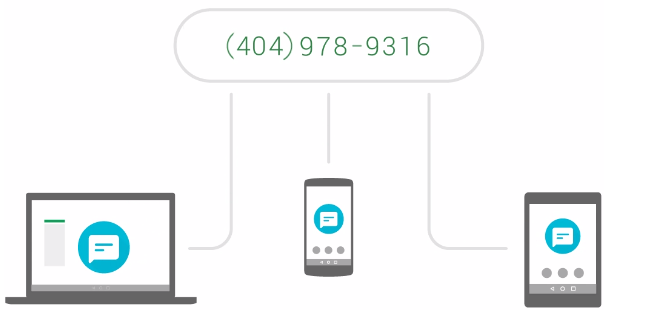

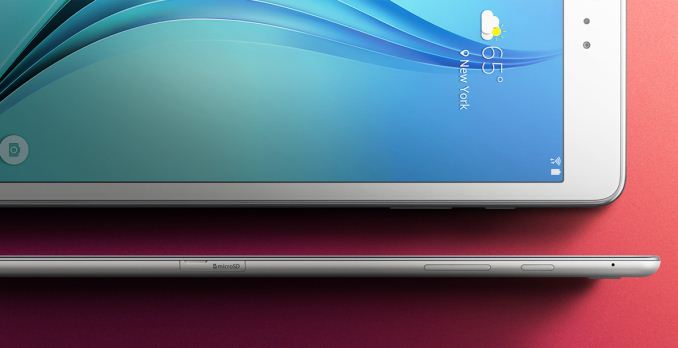
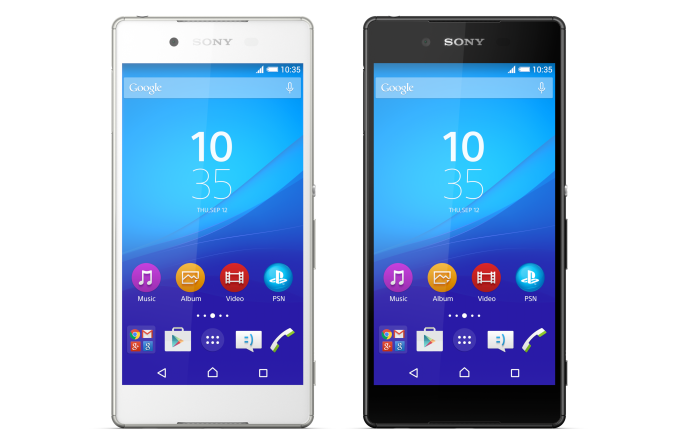

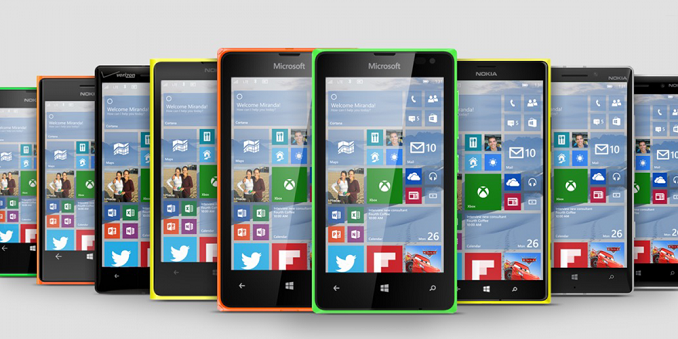
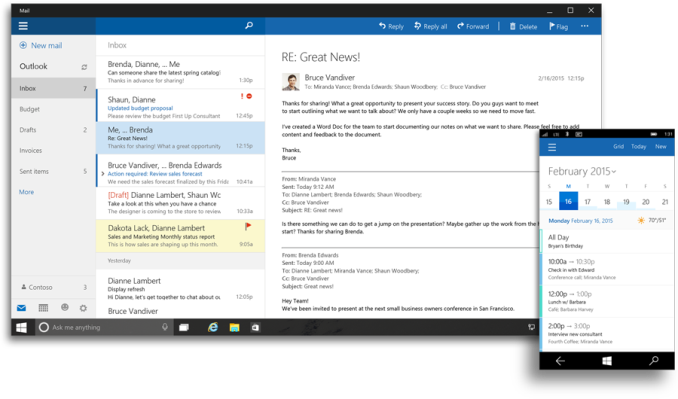

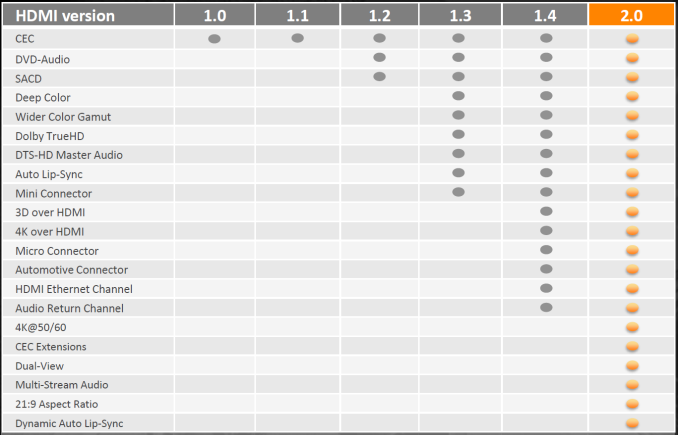
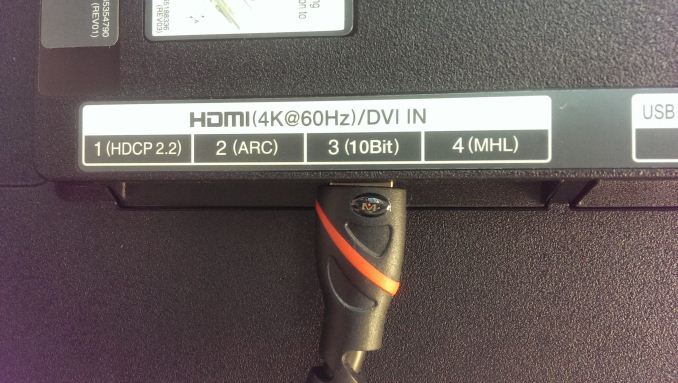
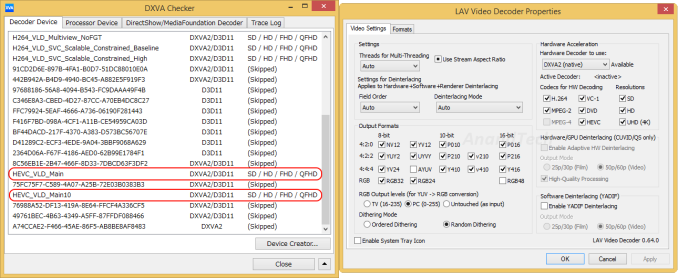



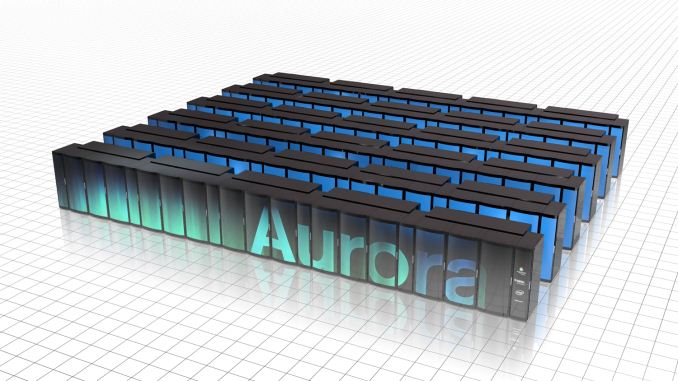

No comments:
Post a Comment